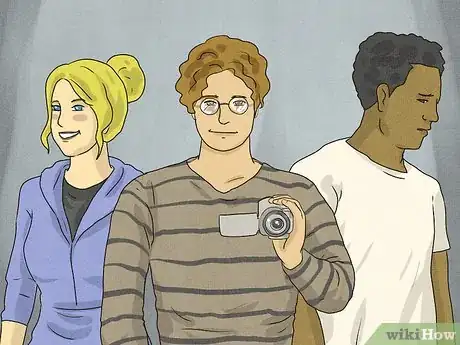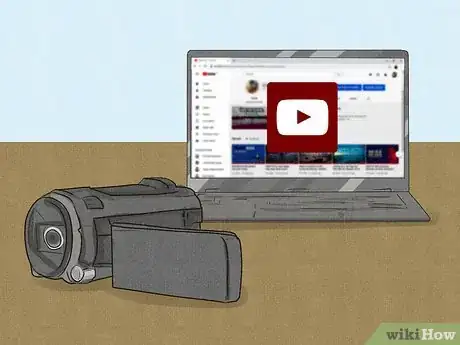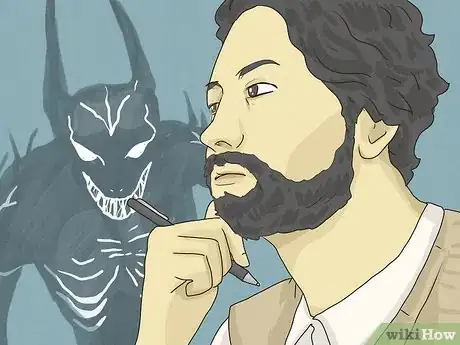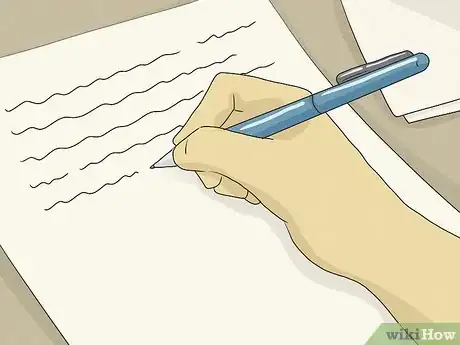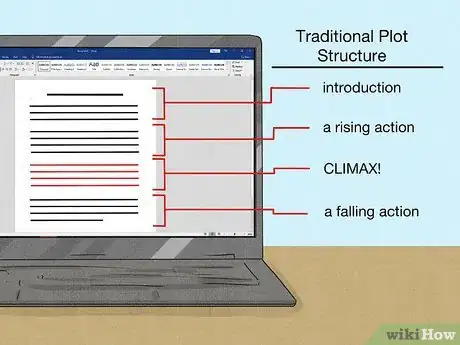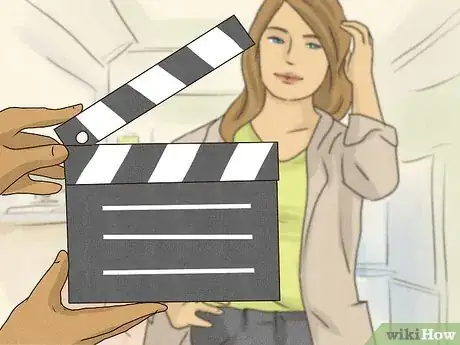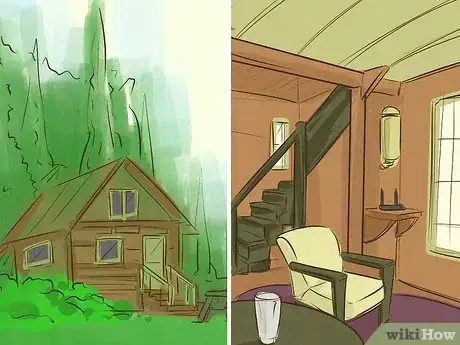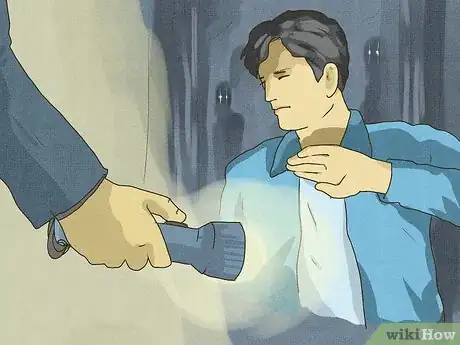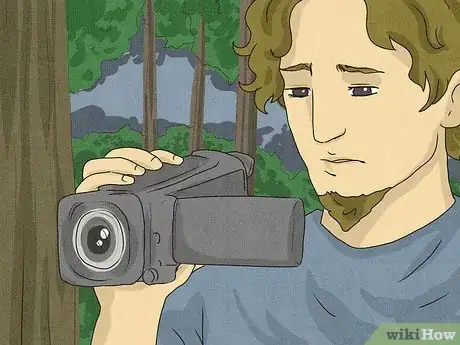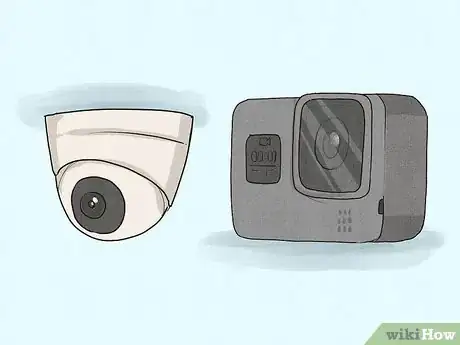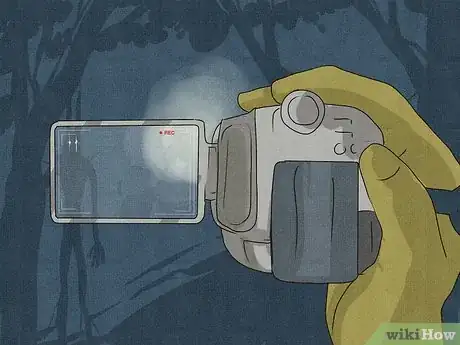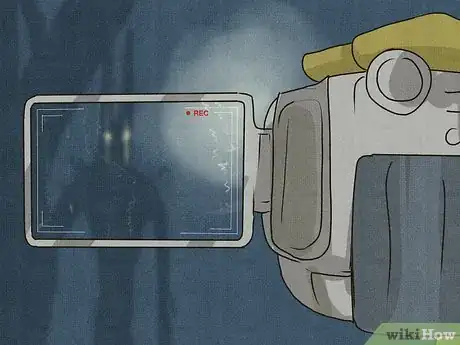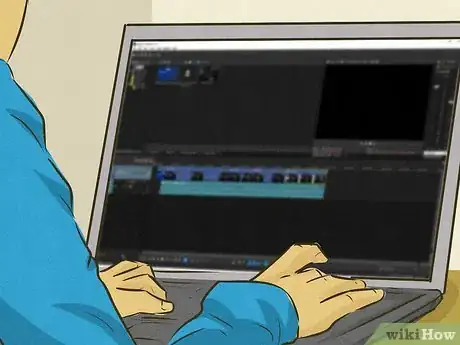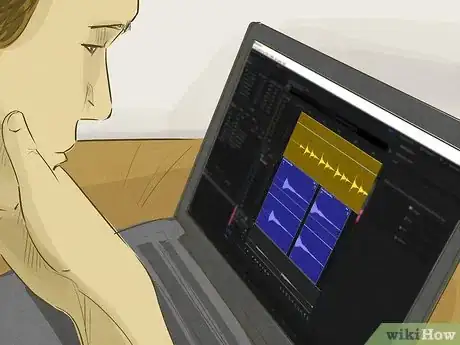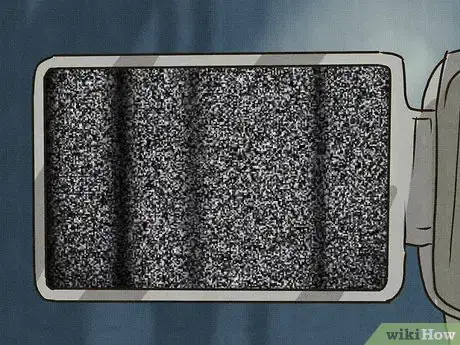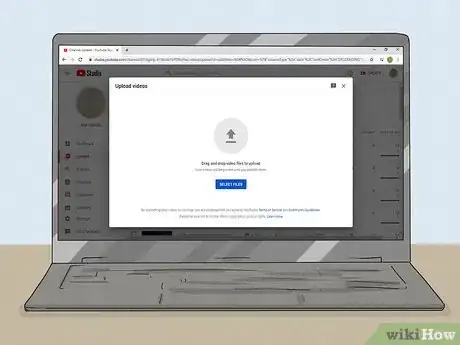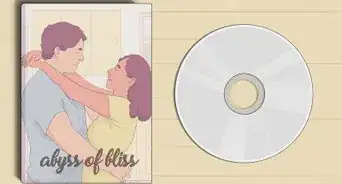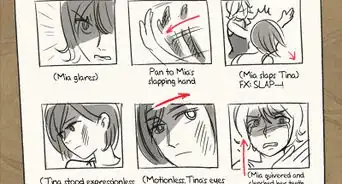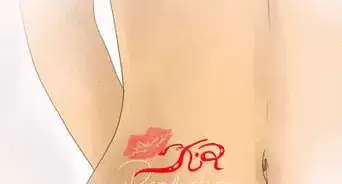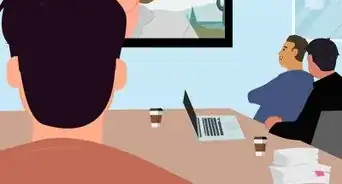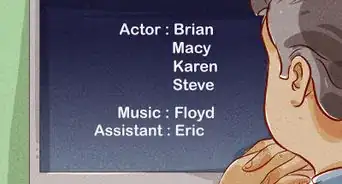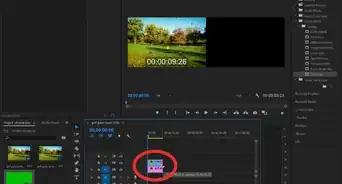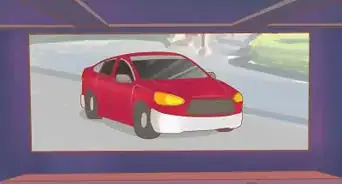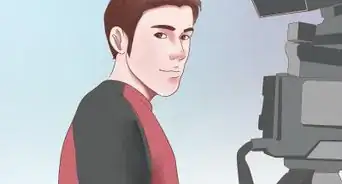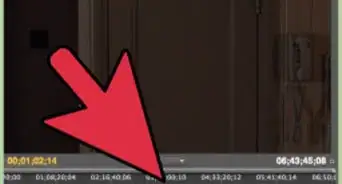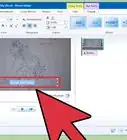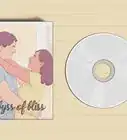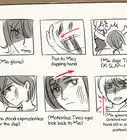This article was co-authored by wikiHow staff writer, Hannah Madden. Hannah Madden is a writer, editor, and artist currently living in Portland, Oregon. In 2018, she graduated from Portland State University with a B.S. in Environmental Studies. Hannah enjoys writing articles about conservation, sustainability, and eco-friendly products. When she isn’t writing, you can find Hannah working on hand embroidery projects and listening to music.
There are 7 references cited in this article, which can be found at the bottom of the page.
wikiHow marks an article as reader-approved once it receives enough positive feedback. In this case, 89% of readers who voted found the article helpful, earning it our reader-approved status.
This article has been viewed 59,142 times.
Learn more...
With movies like The Blair Witch Project, Cloverfield, and V/H/S, it’s no wonder why the found footage technique is so popular in film-making. The shaky camera angles and the long, uncut scenes make the movie look and feel realistic. If you want to make your own found footage film, there are a few things you can do to trick your audience into believing the footage they’re watching actually happened. Keep in mind that found footage films don’t have to be horror movies, so you can use your creativity to make anything you want!
Steps
Plot and Characters
-
1Pick 3 to 4 main characters to focus on. Choose a protagonist who will do most of the filming. The other characters can be friends of the person filming, go to the same school, or be part of their family. Your audience will be seeing the story through their eyes, so try to make them realistic and likeable.[1]
- Make sure the connections with your characters are really solid. Come up with backstories for each one so it’s clear why they’re all together.
- For example, maybe the characters all go to school together and they’re on a field trip. Or maybe the characters are a family that just moved into a new house.
-
2Come up with a realistic reason to explain why your protagonist is filming. Home movies are fine, but they’re a little dated. Try saying that the character is filming for their YouTube channel or another social media page to make the story seem realistic.[2]
- You can set it up by having another character say something like, “Are you filming one of your vlogs again?” That way, the audience knows why the footage was being taken.
- In paranormal films, people often justify their footage by trying to capture evidence of a haunting or possession.
Advertisement -
3Think of a scary or sinister villain to unnerve your audience. Found footage films almost always have a villain that chases the main characters at some point. Your villain can be a made-up monster, a real person, or anything in between.[3]
- The villain could even be a ghost or evil entity that you never actually see in the movie.
- You can make a scary low-budget villain by having someone put on a creepy mask and stand far away in the shadows.
-
4Write a convincing script with realistic character dialog. Found footage films should sound exactly like you’d talk to people in real life. Put together a script so your actors know what to say, but don’t be afraid to let them take over and talk how they normally would.[4]
- Throw in informal contractions, like “gonna,” “wanna,” or “gotta” to keep the dialogue realistic.
- Your movie should be about 1 to 1.5 hours long in total.
-
5Follow a traditional plot structure. Your movie should have an introduction, a rising action, a climax, and a falling action. If you’d like to end your movie on a cliffhanger, you can cut your movie in the middle of the climax instead.[5]
- This tight structure will help your audience keep track of what’s going on so they don’t get lost.
-
6Hire actors who aren’t well-known to make your movie seem realistic. If you want your story to be believable, you don’t want to get actors that people will recognize. Reach out to your friends or actors in your town that haven’t booked many gigs before.[6]
- Less well known actors will also be cheaper to hire than more established ones.
Filming
-
1Pick a filming location that fits the storyline. If your story is set in a cabin in the woods, head out to the wilderness. If it’s on a snowy mountain, grab your coat and your snowshoes. Pick an area where you can move around and shoot a lot of different scenes.[7]
- Public and national parks are great spots to film your movie for cheap or even free.
- Take the time of day into account, too. If you want to film at night, head out before the sun sets.
-
2Make the set look as organic as possible. Found footage is supposed to look real, so don’t spend a ton of time on lighting or staging. Make sure the actors in the scene are lit up or spotlighted, then leave the rest alone.[8]
- You can light actors by having them hold a phone camera or a flashlight pointed at each other. It seems realistic, and it also adds a spooky element to your story.
-
3Have your protagonist hold the camera for most of the film. To make your film look realistic, hand off a camera to one of the actors as they shoot a scene. The actor can set the camera down, keep it on their lap, or hold it up as they talk to other actors, as long as it seems organic.[9]
- This character usually interacts with the other characters to some degree. A silent observer won't feel very realistic for every scene.
- The camera-work doesn’t have to be perfect. A little bit of shakiness or some blurry shots as the actor runs will make your movie seem more realistic.
-
4Vary your footage with additional cameras and angles. You can make the bulk of your film shot from the main camera, but you can also cut to different cameras for more realism. Set up cameras on the ceiling or the roof for a CCTV camera, have an actor wear a GoPro on their head for a running shot, or hand the camera off to someone else for a different angle.[10]
- You could also have news footage or a viral social media post in your movie.
- The camera angles don’t have to look perfect or intentional. If the camera sits halfway behind the couch or is blocked slightly by a vase, that’s okay. It’ll add more realism to the scene.
-
5Shoot your villain in shadows or darkness for extra spookiness. If you do want to show your monster on camera, make sure they stay far away from the camera whenever they’re on screen. Put them in a shadowy hallway, under a dark tree canopy, or peaking through shrubbery for extra spookiness.[11]
- You don’t have to reveal your villain at all if you don’t want to. Leaving them up to the audience’s imagination can be scary enough.
Editing
-
1Make your shots a little blurry or shaky. If the camera work looks too polished, your footage won’t be believable. Add in some static, some blurring around the edges, or some shakiness to make it look like a home movie.[12]
- You can add some static at the beginning and the end of the movie to make it seem more realistic, too.
- Don't go overboard with the shakiness! If the footage quality is too poor or it makes people feel dizzy or sick, your film won't be successful.
-
2Use long, uncut shots for more realism. Most found footage films don’t use a lot of cuts between scenes. If you can, try not to cut your footage down too much and instead use the organic shots.[13]
- Adobe Premiere and iMovie are great movie editors you can download onto your computer.
-
3Add scary sound effects to support the narrative and visuals. As your movie ramps up, you may need to do some sound editing. Add in rustling leaves, creaking doorways, or high pitched screams to make it extra scary.[14]
- Try not to use music in your film, as that makes it seem like an edited movie.
-
4Cut to black or static when the movie ends. As you reach the end of your shots, make it seem like the camera turned off or got broken when the movie ends. You can simply cut to black, or you can edit in some TV static.[15]
- Found footage films don’t usually have credits, especially if you’re trying to make it believable.
-
5Upload the film to YouTube for extra realism. If you want to make your audience think that your footage is real, make a YouTube channel and post your footage there. You can promote it on social media and send it to your friends to get more exposure.[16]
- You could make a YouTube channel dedicated to found footage films, or you could upload it to your personal channel and make everyone believe that you’re a friend of the camera operator.
Community Q&A
-
QuestionCan you use a phone to film without it looking worse?
 wikiHow Staff EditorThis answer was written by one of our trained team of researchers who validated it for accuracy and comprehensiveness.
wikiHow Staff EditorThis answer was written by one of our trained team of researchers who validated it for accuracy and comprehensiveness.
Staff Answer wikiHow Staff EditorStaff AnswerDefinitely! Most smart phones have pretty good cameras nowadays, so filming on a phone shouldn't be a problem. It will probably add more realism to the story, too.
wikiHow Staff EditorStaff AnswerDefinitely! Most smart phones have pretty good cameras nowadays, so filming on a phone shouldn't be a problem. It will probably add more realism to the story, too. -
QuestionFound footage movies have been done to death, and no longer have the advantage of the Blair Witch Project where since it was the first of its kind everyone believed it. How do I keep my movie fresh?
 wikiHow Staff EditorThis answer was written by one of our trained team of researchers who validated it for accuracy and comprehensiveness.
wikiHow Staff EditorThis answer was written by one of our trained team of researchers who validated it for accuracy and comprehensiveness.
Staff Answer wikiHow Staff EditorStaff AnswerExplore other genres beside horror. Most found footage films are horror-based, but you could make a sci-fi or apocalyptical one, a thriller, or even an action movie.
wikiHow Staff EditorStaff AnswerExplore other genres beside horror. Most found footage films are horror-based, but you could make a sci-fi or apocalyptical one, a thriller, or even an action movie. -
QuestionHow many characters are In the movie?
 Community AnswerYour choice. Just remember that too many can be confusing and too few can get boring.
Community AnswerYour choice. Just remember that too many can be confusing and too few can get boring.
References
- ↑ https://www.vulture.com/2014/01/5-ways-to-keep-the-found-footage-genre-fresh.html
- ↑ https://www.youtube.com/watch?v=O1M9P-K_9v4&feature=youtu.be&t=234
- ↑ https://www.filmindependent.org/blog/fix-found-footage-three-easy-steps/
- ↑ https://www.filmindependent.org/blog/fix-found-footage-three-easy-steps/
- ↑ https://www.filmindependent.org/blog/fix-found-footage-three-easy-steps/
- ↑ https://www.indiewire.com/2015/02/how-to-make-a-found-footage-horror-film-thats-actually-scary-65430/
- ↑ https://www.vulture.com/2014/01/5-ways-to-keep-the-found-footage-genre-fresh.html
- ↑ https://www.indiewire.com/2015/02/how-to-make-a-found-footage-horror-film-thats-actually-scary-65430/
- ↑ https://thescriptlab.com/features/main/7525-art-writing-horror-found-footage-done-right/
- ↑ https://www.vulture.com/2014/01/5-ways-to-keep-the-found-footage-genre-fresh.html
- ↑ https://thescriptlab.com/features/main/7525-art-writing-horror-found-footage-done-right/
- ↑ https://birthmoviesdeath.com/2011/09/01/the-devins-advocate-the-rules-for-found-footage-films
- ↑ https://birthmoviesdeath.com/2011/09/01/the-devins-advocate-the-rules-for-found-footage-films
- ↑ https://www.youtube.com/watch?v=O1M9P-K_9v4&feature=youtu.be&t=324
- ↑ https://birthmoviesdeath.com/2011/09/01/the-devins-advocate-the-rules-for-found-footage-films
- ↑ https://www.indiewire.com/2015/02/how-to-make-a-found-footage-horror-film-thats-actually-scary-65430/
